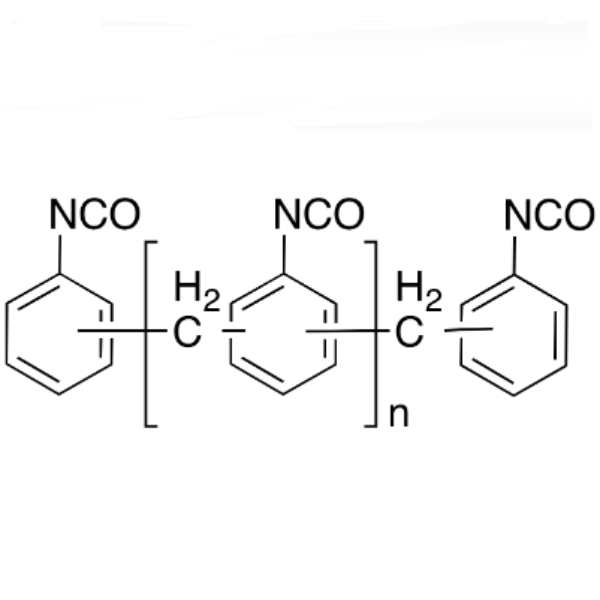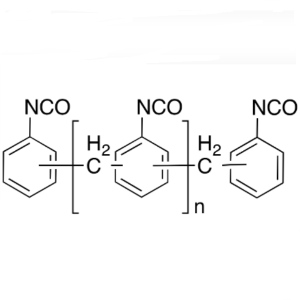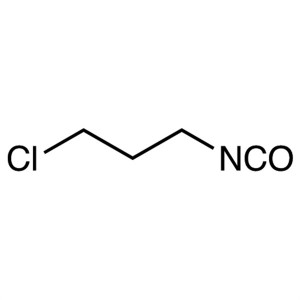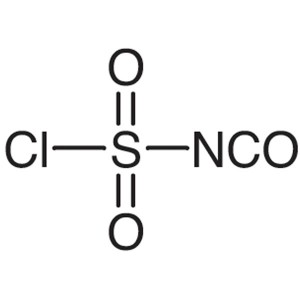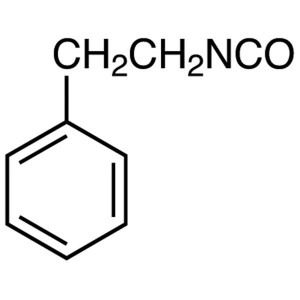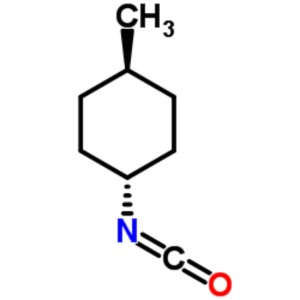PMDI CAS 9016-87-9 Polymethylene Polyphenyl Polyisocyanate
Shanghai Ruifu Chemical Co., Ltd. is the leading manufacturer of Polymethylene Polyphenyl Polyisocyanate (PMDI; Polymeric MID) (CAS: 9016-87-9) with high quality. Ruifu Chemical can provide worldwide delivery, competitive price, excellent service, small and bulk quantities available. Purchase PMDI, Please contact: alvin@ruifuchem.com
| Chemical Name | Polymethylene Polyphenyl Polyisocyanate |
| Synonyms | PMDI; PAPI; Polymeric MID; MDI PM 200; Polymethylene Polyphenyl Isocyanate; Poly[(phenyl isocyanate)-co-formaldehyde]; Coronatemr200; Cr200 |
| Stock Status | In Stock, Commercial Scale |
| CAS Number | 9016-87-9 |
| Molecular Formula | C8H7NO2 |
| Molecular Weight | 149.14668 g/mol |
| Boiling Point | 392℃/5 mm Hg |
| Flash Point | >230°F |
| Density | 1.2 g/mL at 25℃(lit.) |
| Refractive Index n20/D | 1.634 |
| COA & MSDS | Available |
| Brand | Ruifu Chemical |
|
Item |
Inspection Standard |
Results |
Test Method |
|
Appearance |
Brown Liquid |
Brown Liquid |
GB/T 13658-1992 |
|
Viscosity (25℃) (mPa.S) |
150~250 |
231 |
GB/T 12009.3-2009 |
|
NCO Content (%Wt) |
30.20~32.00 |
30.87 |
GB/T 12009.4-1989 |
|
Density (25℃)/(g/cm3) |
1.220~1.250 |
1.232 |
GB/T 4472-1984 |
|
Acid Content (%, HCI Count) |
≤0.05 |
0.0060 |
GB/T 12009.5-1992 |
|
Hydrolysable Chlorine (%) |
≤0.20 |
0.0544 |
GB/T 12009.2-1989 |
Package: 220kg/Drum, or according to customer's requirement.
Shipping: Deliver to worldwide by air, by sea by FedEx / DHL Express. Provide fast and reliable delivery.
Stability: Stable. Incompatible with strong oxidizing agents, alcohols. May decompose in moist air, or on contact with water.
Since PMDI is a reactive chemical, reaction with atmospheric moisture happens easily and leads to the formation of insoluble ureas and carbon dioxide gas, which can result in pressure build-up in closed containers and viscosity increase of the product. Containers must therefore be absolutely dry and carefully sealed after congested with nitrogen. Containers of PMDI should be kept properly closed and stored indoors at ambient temperature (15-35℃) in a well-ventilated area. Storage at low temperature (below 5℃) may lead to some crystallization; this material must, therefore, be protected from frost. If crystallization does occur, the material should be heated by rolling the drum in a hot air oven at 70-80℃ to melt it out, and should then be thoroughly agitated before use. Melting in a water bath is not recommended. Extended storage at temperatures above 50℃ is not recommended to prevent from the formation of insoluble solids and viscosity increase.
How to Purchase? Please contact Dr. Alvin Huang: sales@ruifuchem.com or alvin@ruifuchem.com
15 Years Experience? We have more than 15 years of experience in the manufacture and export of a wide range of high quality pharmaceutical intermediates or fine chemicals.
Main Markets? Sell to domestic market, North America, Europe, India, Korea, Japanese, Australia, etc.
Advantages? Superior quality, affordable price, professional services and technical support, fast delivery.
Quality Assurance? Strict quality control system. Professional equipment for analysis include NMR, LC-MS, GC, HPLC, ICP-MS, UV, IR, OR, K.F, ROI, LOD, MP, Clarity, Solubility, Microbial limit test, etc.
Samples? Most products provide free samples for quality evaluation, shipping cost should be paid by customers.
Factory Audit? Factory audit welcome. Please make an appointment in advance.
MOQ? No MOQ. Small order is acceptable.
Delivery Time? If within stock, three days delivery guaranteed.
Transportation? By Express (FedEx, DHL), by Air, by Sea.
Documents? After sales service: COA, MOA, ROS, MSDS, etc. can be provided.
Custom Synthesis? Can provide custom synthesis services to best fit your research needs.
Payment Terms? Proforma invoice will be sent first after confirmation of order, enclosed our bank information. Payment by T/T (Telex Transfer), PayPal, Western Union, etc.
Risk Codes
R20 - Harmful by inhalation
R36/37/38 - Irritating to eyes, respiratory system and skin.
R42 - May cause sensitization by inhalation
R42/43 - May cause sensitization by inhalation and skin contact.
R26 - Very Toxic by inhalation
R22 - Harmful if swallowed
R39/23/24/25 -
R23/24/25 - Toxic by inhalation, in contact with skin and if swallowed.
R11 - Highly Flammable
R20/21/22 - Harmful by inhalation, in contact with skin and if swallowed.
Safety Description
S26 - In case of contact with eyes, rinse immediately with plenty of water and seek medical advice.
S28 - After contact with skin, wash immediately with plenty of soap-suds.
S38 - In case of insufficient ventilation, wear suitable respiratory equipment.
S45 - In case of accident or if you feel unwell, seek medical advice immediately (show the label whenever possible.)
S36/37 - Wear suitable protective clothing and gloves.
S23 - Do not breathe vapour.
S16 - Keep away from sources of ignition.
S7 - Keep container tightly closed.
S36 - Wear suitable protective clothing.
WGK Germany 3
RTECS TR0350000
Polymethylene Polyphenyl Polyisocyanate (PMDI; Polymeric MID) (CAS: 9016-87-9)
PMDI is a diisocyanate-diphenylmethane(MDI)-based composition containing some higher functionality isocyanates. The functionality is about 2.6-2.7. It is abrown liquid at ambient temperatures.
PMDI can be widely used in the production of rigid PU foam heat-insulating materials; also used in isocyanurate foam, paints, adhesives, structural foam,cellular integral skin foam, automotive bumper and interior parts, high-resilience foam and synthetic wood, etc. Due to its unique composition structure, PMDI can provide better flowability. It is, therefore, particularly suitable for the production which require strict flowability of systems.
PMDI is an engineering polymer used in the synthesis of highly resiliant polyurethane foams with flame retardancy.Environmental toxin on US EPA Toxic Release Inventory list (TRI) list.
Used for the manufacture of high-performance microporous polyurethane elastomer, coating and soft polyurethane self-peeling foam, including soles, solid core tires, car fenders, shock absorbers, choke plates, steering wheels, seat head pillows, armrests, interior accessories, etc. It is also widely used in the manufacture of adhesives, coatings, prepolymers and semi-prepolymers.
Used in the manufacture of foam plastics, adhesives, etc. used in the manufacture of polyurethane materials, widely used in the construction industry, automotive industry, electrical industry, such as thermal insulation materials or bedding.
PMDI is very volatile and less toxic in respiratory inhalation and skin absorption, but it contains isocyanate groups (NCO) groups that are easy to react with moisture, when the material temperature is heated to more than 40℃ (such as melting) or the working environment is poorly ventilated, it will increase the vapor toxicity, in addition to the use of spraying process construction work place, it can lead to an increase in the concentration of suspended particles in the air and cause toxicity. Work in a similar environment should wear a gas mask and respirator, otherwise, repeated inhalation of excessive concentrations of steam will cause respiratory allergies. As soon as you get it on the skin or inside the eye, rinse with water and wash the skin with soap and water. Galvanized iron drum packaging, the product is non-volatile, can be transported according to the relevant provisions of the general chemicals. Due to the active chemical nature of PMDI, it is easy to react with water to generate insoluble urea compounds and release carbon dioxide, causing the drum barrel and increasing the viscosity. Therefore, during the storage process, the container must be strictly dry sealed and filled with dry nitrogen protection. PMDI should be at room temperature (20~25 deg C) in a well-ventilated room strictly sealed preservation; If the storage temperature is too low (below 5 deg C) can lead to the formation of crystallization phenomenon, so must pay attention to antifreeze. Once crystallization occurs, it should be heated and melted at 70-80℃ before use, and stirred well. Should avoid long-term storage above 50℃, In order to avoid the formation of insoluble solids and increase the viscosity. The shelf life of PMDI is 1 year under suitable storage conditions.
Physical and Chemical Properties: Brown transparent liquid with pungent odor.
Air & Water Reactions: Reacts with water slowly forming heavy scum and liberating carbon dioxide gas. Dangerous pressure can build up if container is sealed.
Reactivity Profile: Polymethylene polyphenyl polyisocyanate reacts with water slowly forming heavy scum and liberating carbon dioxide gas. Dangerous pressure can build up if container is sealed. Base-catalysed reactions of isocyanates with alcohols should be carried out in inert solvents. Such reactions in the absence of solvents often occur with explosive violence [Wischmeyer 1969].
Hazard Questionable carcinogen.
Health Hazard: Inhalation causes breathlessness, chest discomfort, and reduced pulmonary function; wheezing, cough, and sputum may also occur. Contact with liquid irritates eyes and skin. Ingestion causes irritation of mouth and stomach.
Fire Hazard: Behavior in Fire: Containers may explode.
Safety Profile: Moderately toxic by ingestion. Mildly toxic by inhalation. Questionable carcinogen with experimental neoplastigenic data by implant route. When heated to decomposition it emits toxic fumes of NOx.

